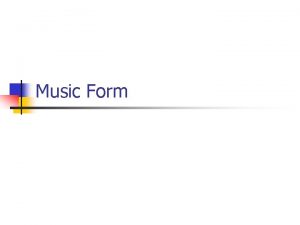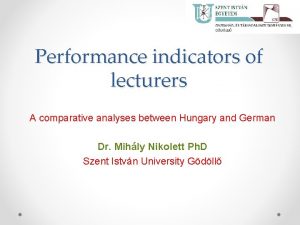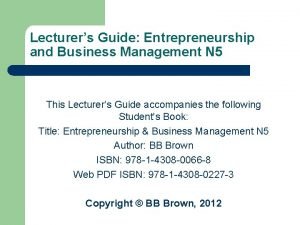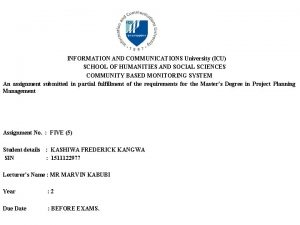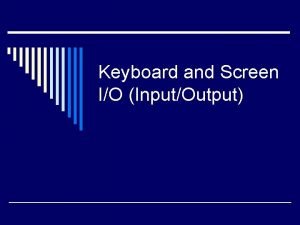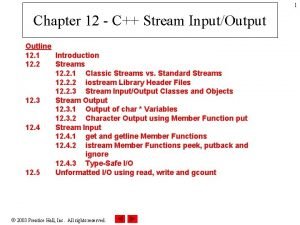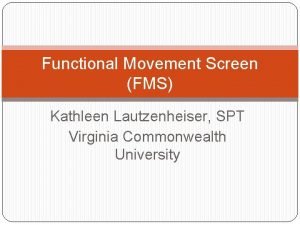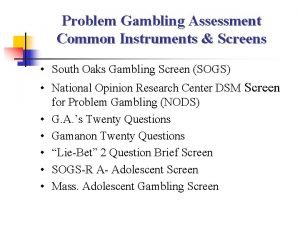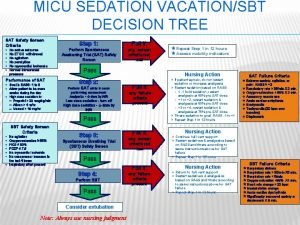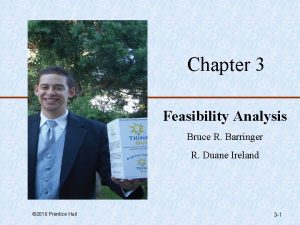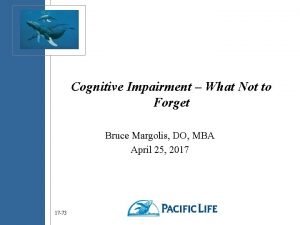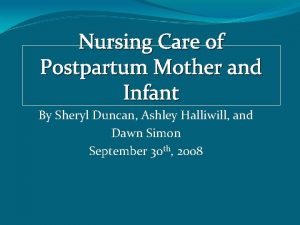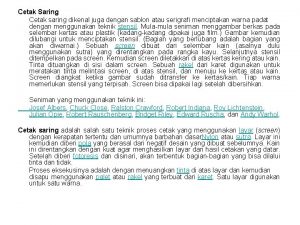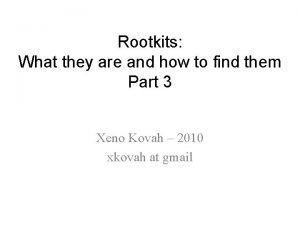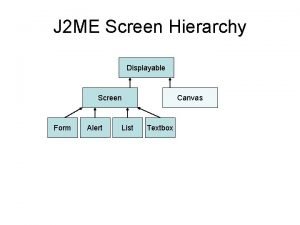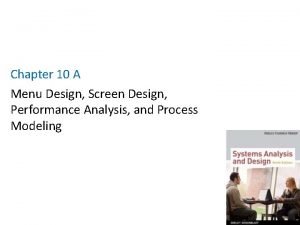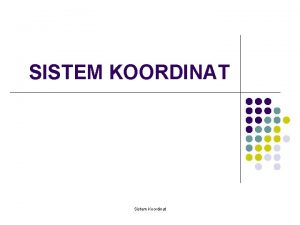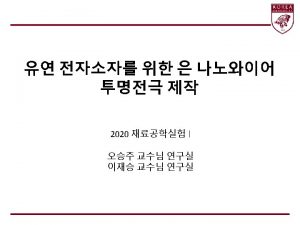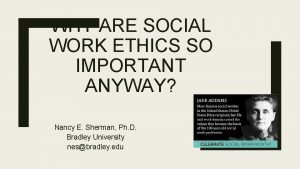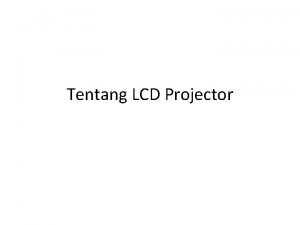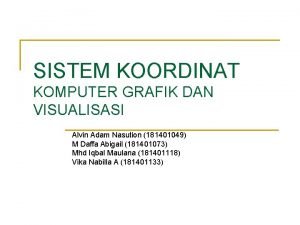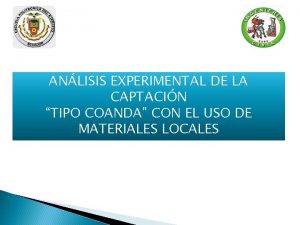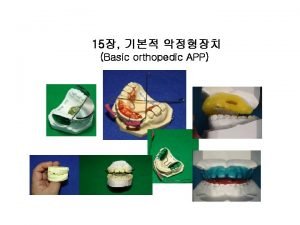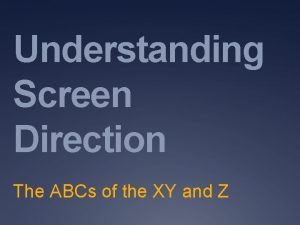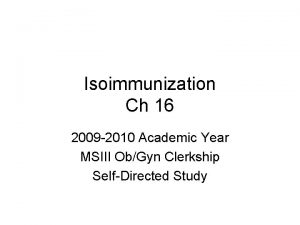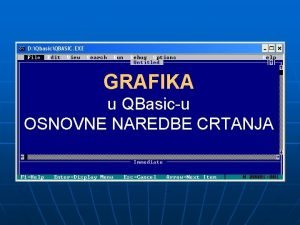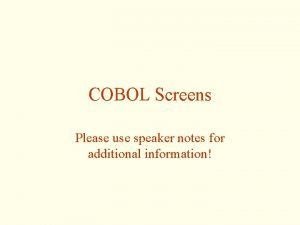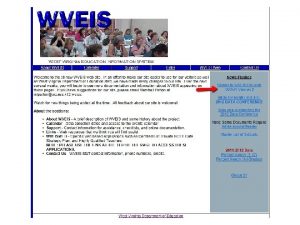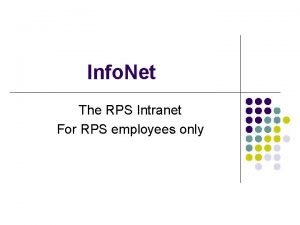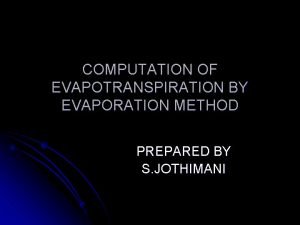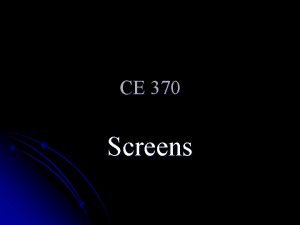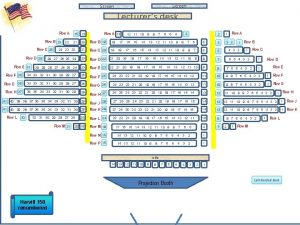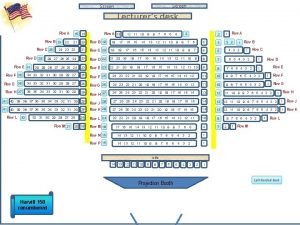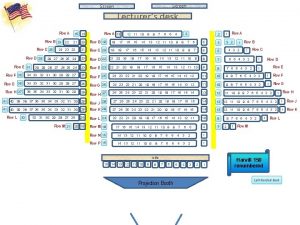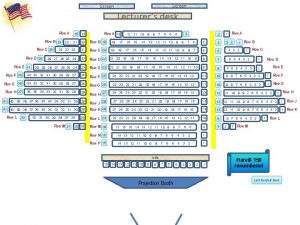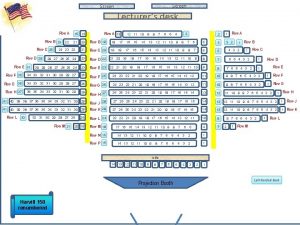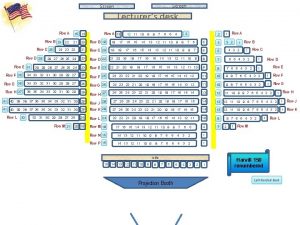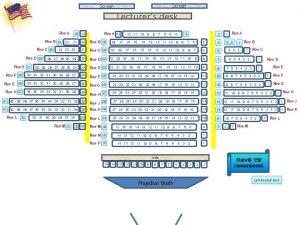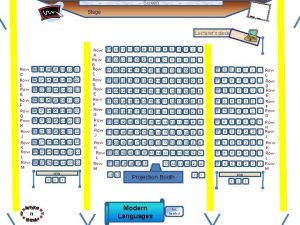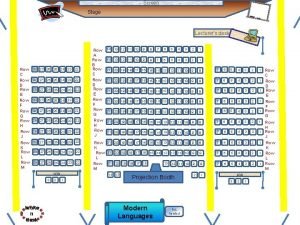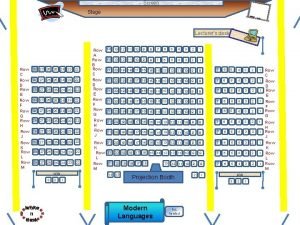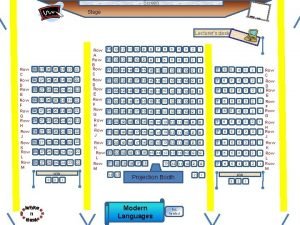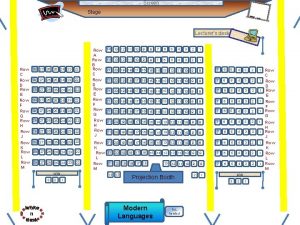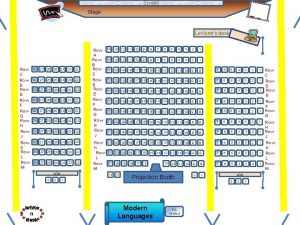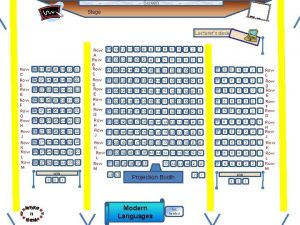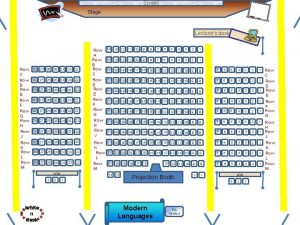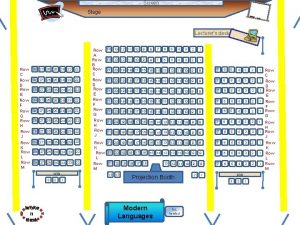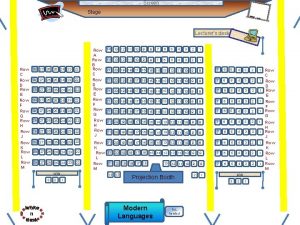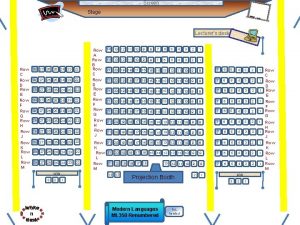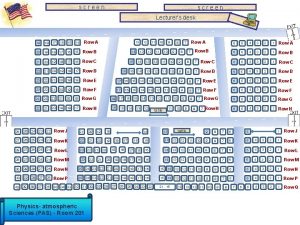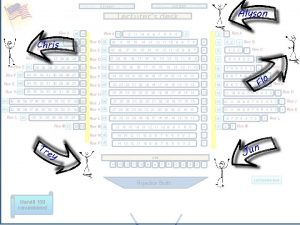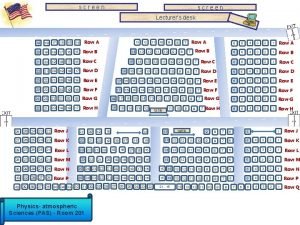Screen Stage Lecturers desk Row C Row D

































































- Slides: 65

Screen Stage Lecturer’s desk Row C Row D Row E Row F Row G Row H Row J Row K Row L Row M 28 27 26 28 27 25 24 23 22 26 25 24 23 22 28 27 26 25 24 23 22 28 27 26 25 24 23 22 28 27 26 25 24 23 22 table 3 broke n desk 2 1 Row A Row B Row C Row D Row E Row F Row G Row H Row J Row K Row L Row M 14 13 12 11 10 9 8 7 6 5 4 3 2 1 21 20 19 18 17 16 15 14 13 12 11 10 9 8 7 6 5 4 3 2 1 21 20 19 18 17 16 15 14 13 12 11 10 9 8 7 6 5 4 3 2 1 21 20 19 18 17 16 15 14 13 12 11 10 9 8 7 6 5 4 3 2 1 21 20 19 18 17 16 13 12 11 10 9 8 7 6 5 4 3 2 1 14 13 2 1 Projection Booth Modern Languages R/L handed table 3 2 1 Row C Row D Row E Row F Row G Row H Row J Row K Row L Row M

MGMT 276: Statistical Inference in Management Spring 2015


Schedule of readings Before our next exam (March 24 th) We’ll be jumping around some…we will start with chapter 7 Lind (5 – 11) Chapter 5: Survey of Probability Concepts Chapter 6: Discrete Probability Distributions Chapter 7: Continuous Probability Distributions Chapter 8: Sampling Methods and CLT Chapter 9: Estimation and Confidence Interval Chapter 10: One sample Tests of Hypothesis Chapter 11: Two sample Tests of Hypothesis Plous (10, 11, 12 & 14) Chapter 10: The Representativeness Heuristic Chapter 11: The Availability Heuristic Chapter 12: Probability and Risk Chapter 14: The Perception of Randomness

Homework due – Tuesday (March 3 rd) On class website: Please print and complete Homework Assignment 9 Chapter 5 Approaches to probabilities and Chapter 7 Interpreting probabilities using the normal curve Calculating z-score, raw scores and areas (probabilities) under normal curve

Use this as your study guide By the end of lecture today 2/26/15 Counting ‘standard deviationses’ – z scores Connecting raw scores, z scores and probability Connecting probability, proportion and area of curve Percentiles Approaches to probability: Empirical, Subjective and Classical

Normal distribution Raw scores z-scores Have z Find raw score Formula probabilities Z Scores z table Have z Find area Have area Find z Have raw score Find z Raw Scores Area & Probability

Always draw a picture! Homeworksheet

Homeworksheet. 6800 1 also fine: 68% also fine: . 6826 . 6800 1 sd -1 z = 28 1 sd 30 1 z = 32

Homeworksheet. 9500 2 also fine: 95% also fine: . 9544 . 9500 2 sd -2 z = 26 28 2 sd 30 32 2 z = 34

Homeworksheet. 9970 3 also fine: 99. 7% also fine: . 9974 . 9970 3 sd -3 z = 24 26 28 3 sd 30 32 34 3 z = 36

Homeworksheet . 5000 4 also fine: 50% . 5000 24 26 28 0 z = 30 32 34 36

Homeworksheet 33 -30 z = 1. 5 z= 2 Go to table . 4332 5 also fine: 43. 32%. 4332 24 26 28 30 1. 5 = z 32 34 36

z= 33 -30 z = 1. 5 2 Go to table . 4332 Add area Lower half . 4332 +. 5000 =. 9332 6 also fine: 93. 32%. 9332. 5000 24 26 28 30 . 4332 1. 5 = z 32 34 36

Homeworksheet Go to 33 -30 z=. 4332 = 1. 5 table 2 Subtract from. 5000 -. 4332 =. 0668 7. 4332 also fine: 6. 68%. 0668 24 26 28 30 1. 5 = z 32 34 36

z= 29 -30 2 = -. 5 Go to. 1915 table Add to upper Half of curve. 5000 -. 1915 =. 6915 8 also fine: 69. 15%. 6915. 1915 24 26 -. 5 = z 28 30 . 5000 32 34 36

25 -30 2 31 -30 = 2 = = -2. 5 =. 5 Go to table . 4938. 1915 . 4938 +. 1915 =. 6853 9 also fine: 68. 53%. 6853. 4938 5 -2. = z 24 26 28 . 1915. 5 = 30 z 32 34 36

z= Go to 27 -30 = -1. 5 table 2 . 4332 Subtract From. 5000 -. 4332 =. 0668 10 also fine: 6. 68%. 5000. 0668. 5 24 =-1 z . 4332 26 28 30 32 34 36

z= 25 -30 2 = -2. 5 Go to table . 4938 Add lower Half of curve. 5000 +. 4938 =. 9938 11 also fine: 93. 38%. 9338. 5000 . 4938. 5 24 =-1 z 26 28 30 32 34 36

z= Go to 32 -30 = 1. 0 table 2 . 3413 Subtract from. 5000 -. 3413 =. 1587 12 also fine: 15. 87% . 3413 1587. . 5000 24 26 28 30 1 z = 32 34 36

50 th percentile = median 30 13 In a normal curve Median= Mean = Mode 24 26 28 0 z = 30 32 34 36

28 32 14. 6800 1 sd 24 26 -1 z = 28 1 sd 30 1 z = 32 34 36

77 th percentile Find area of interest . 7700 -. 5000 =. 2700 Find nearest z =. 74 15 x = mean + z σ = 30 + (. 74)(2) = 31. 48 z table provides area from mean to score . 5000. 2700. 7700 24 30 4 . 7 z = ? 31. 48 36

13 th percentile Find area of interest . 5000 -. 1300 =. 3700 Find nearest z = -1. 13 16 x = mean + z σ = 30 + (-1. 13)(2) = 27. 74 Note: . 13 +. 37 =. 50 z table provides area from mean to score . 1300 24 z ? . 13 1 = 27. 74 . 3700 30 36

Please use the following distribution with a mean of 200 and a standard deviation of 40. 80 120 160 200 240 280 320

. 6800 17 also fine: 68% also fine: . 6826 . 6800 1 sd -1 z = 160 1 sd 1 z = 200 240

. 9500 18 also fine: 95% also fine: . 9544 . 9500 2 sd -2 z = 120 2 sd 200 2 z = 280

. 9970 19 also fine: 99. 7% also fine: . 9974 . 9970 3 sd -3 z = 80 3 sd 200 3 z = 320

= 230 -200 =. 75 40 Go to table . 2734 20 also fine: 27. 34% 4 . 273 80 120 160 5 . 7 z = 200 240 280 320

190 -200 = -. 25 Go to z= table 40 . 0987 also fine: 40. 13 Subtract from. 5000 -. 0987 =. 4013 21 . 0987 . 4013. 5000 80 120 -. 5 z = 160 200 240 280 320

180 -200 = -. 5 Go to z= table 40 . 1915 Add to upper. 5000 +. 1915 =. 6915 Half of curve also fine: 22 69. 15%. 6915. 1915 80 120 -. 5 z = 160 200 . 5000 240 280 320

236 -200 = 0. 9 z= 40 Go to table . 3159 Subtract from. 5000 -. 3159 =. 1841 23. 3159 also fine: 18. 41%. 1841 80 120 160 =. 9 z 200 240 280 320

192 - 200 40 = 222 - 200 40 z= z = -. 2 =. 55 Go to table . 0793. 2088 also fine: 28. 81% . 0793 +. 2088 =. 2881 24 . 2881. 2088. 0793 80 120 2 =-. z 160 5 . 5 200 z = 240 280 320

z= 275 -200 = 1. 875 40 Go to table . 4693 or. 4699 Add area Lower half Please note: If z-score rounded to 1. 88, then percentile = 96. 99% . 4693 +. 5000 =. 9693. 4699 +. 5000 =. 9699 also fine: 25 96. 93%. 9693 . 5000 80 120 160 . 4693 5 . 87 200 z =1240 280 320

295 -200 z = 2. 375 z= 40 Go to table . 4911 or. 4913 . 5000 -. 4911 =. 0089 Add area Lower half. 5000 -. 4913 =. 0087 26 Please note: If z-score rounded to 2. 38, then area =. 0087 . 4911 also fine: 0. 89% . 0089 80 120 160 200 75 240 z =2. 3280 320

Add to upper 130 -200 = -1. 75 Go to. 5000 +. 4599 =. 9599 z=. 4599 table Half of curve 40 also fine: 27 95. 99%. 9599. 5000 . 4599 80 z . 75 1 120 = 160 200 240 280 320

Subtract 130 -200 = -1. 75 Go to z=. 4599 table from. 5000 40 . 5000 -. 4599 =. 0401 28 also fine: 4. 01% . 5000 . 4599 1 0 4. 0 80 z . 75 1 120 = 160 200 240 280 320

99 th percentile Find area of interest Find nearest z = 2. 33 . 9900 -. 5000 =. 4900 29 x = mean + z σ = 200 + (2. 33)(40) = 293. 2 . 5000 . 4900 . 9900 80 120 160 z table provides area from mean to score 200 240 33 2. z = ? 293. 2

33 rd percentile Find area of interest . 5000 -. 3300 =. 1700 Find nearest z = -. 44 30 x = mean + z σ = 200 + (-. 44)(40) = 182. 4 Note: . 33 +. 17 =. 50 z table provides area from mean to score . 3300 80 . 1700 ? 44 -. 182. 4 = z 200 240 280 320

40 th percentile Find area of interest . 5000 -. 4000 =. 1000 Find nearest z = -. 25 31 x = mean + z σ = 200 + (-. 25)(40) = 190 Note: . 40 +. 10 =. 50 z table provides area from mean to score . 4000 80 . 1000 ? 25 -. 182. 4 = z 200 240 280 320

67 th percentile Find area of interest . 6700 -. 5000 =. 1700 Find nearest z =. 44 32 x = mean + z σ = 200 + (. 44)(40) = 217. 6 z table provides area from mean to score . 1700 80 200 ? . 44 = z 217. 6 320

. . 8276. 1056. 2029. 1915. 4332 . 3944 44 50 44 - 50 4 z of 1. 5 = area of. 4332 55 - 50 4 . 3944 55 = -1. 5 = +1. 25 z of 1. 25 = area of. 3944. 4332 +. 3944 =. 8276 . 3944 50 55 - 50 4 55 = +1. 25 = area of. 3944. 5000 -. 3944 =. 1056 52 55 52 - 50 4 = +. 5 z of. 5 = area of. 1915 55 - 50 4 = +1. 25 z of 1. 25 = area of. 3944 -. 1915 =. 2029

What is probability 1. Empirical probability: relative frequency approach Number of observed outcomes Number of observations Probability of getting into an educational program Number of people they let in Number of applicants 400 66% chance of getting admitted Probability of getting a rotten apple Number of rotten apples Number of apples 5 100 5% chance of getting a rotten apple

What is probability 1. Empirical probability: relative frequency approach “There is a 20% chance “More than 30% of 10% of people who buy a that a new stock the results from Number of observed house with no pool build offered in outcomes an initial major search engines one. What is the public offering (IPO) Number observations for the keyword likelihood that Bob will? of will reach or exceed phrase “ring tone” are its target price on fake Probability of hitting the corvette the first day. ” pages created by spammers. ” Number of carts that hit corvette Number of carts rolled 182 200 =. 91 91% chance of hitting a corvette

2. Classic probability: a priori probabilities based on logic rather than on data or experience. All options are equally likely (deductive rather than inductive). Likelihood get Chosen at Lottery question right random to be on multiple team captain choice test Number of outcomes of specific event Number of all possible events In throwing a die what is the probability of getting a “ 2” Number of sides with a 2 Number of sides 1 = 6 16% chance of getting a two In tossing a coin what is probability of getting a tail Number of sides with a 1 Number of sides 1 = 2 50% chance of getting a tail

3. Subjective probability: based on someone’s personal judgment (often an expert), and often used when empirical and classic approaches are not available. Likelihood get a 60% chance Likelihood ”B” in the class that Patriots that company will play at will invent Super Bowl There Verizon new type ofis a 5% chance that battery with Sprint merge will Bob says he is 90% sure he could swim across the river

Approach Example Empirical There is a 2 percent chance of twins in a randomly-chosen birth Classical There is a 50 % probability of heads on a coin flip. Subjective There is a 5% chance that Verizon will merge with Sprint

The probability of an event is the relative likelihood that the event will occur. The probability of event A [denoted P(A)], must lie within the interval from 0 to 1: 0 < P (A ) < 1 If P(A) = 0, then the event cannot occur. If P(A) = 1, then the event is certain to occur.

The probabilities of all simple events must sum to 1 P(S) = P(E 1) + P(E 2) + … + P(En) = 1 For example, if the following number of purchases were made by credit card: 32% P(credit card) =. 32 debit card: 20% Probability P(debit card) =. 20 cash: 35% P(cash) =. 35 check: 13% P(check) =. 13 Sum = 100% Sum = 1. 0

What is the complement of the probability of an event The probability of event A = P(A). The probability of the complement of the event A’ = P(A’) • A’ is called “A prime” Complement of A just means probability of “not A” • P(A) + P(A’) = 100% • P(A) = 100% - P(A’) • P(A’) = 100% - P(A) Probability of getting a rotten apple 5% chance of “rotten apple” 95% chance of “not rotten apple” 100% chance of rotten or not Probability of getting into an educational program 66% chance of “admitted” 34% chance of “not admitted” 100% chance of admitted or not

Two mutually exclusive characteristics: if the occurrence of any one of them automatically implies the non-occurrence of the remaining characteristic Two events are mutually exclusive if they cannot occur at the same time (i. e. they have no outcomes in common). Two propositions that logically cannot both be true. Warranty No Warranty For example, a car repair is either covered by the warranty ( A) or not ( B). http: //www. thedailyshow. com/video/index. jhtml? video. Id=188474&title=an-arab-family-man

Collectively Exhaustive Events are collectively exhaustive if their union is the entire sample space S. Two mutually exclusive, collectively exhaustive events are dichotomous (or binary) events. Warranty No Warranty For example, a car repair is either covered by the warranty ( A) or not ( B).

Satirical take on being “mutually exclusive” Warranty Recently a public figure in the heat of the moment inadvertently made a statement that reflected extreme stereotyping that many would Arab find highly offensive. It is within this context that comical satirists have used the concept of being “mutually exclusive” to have fun with the statement. Transcript: Speaker 1: “He’s an Arab” Speaker 2: “No ma’am, no ma’am. He’s a decent, family man, citizen…” http: //www. thedailyshow. com/video/index. jhtml? video. Id=188474&title=an-arab-family-man No Warranty Decent , family man

Union versus Intersection Union of two events means Event A or Event B will happen ∩ P(A B) Intersection of two events means Event A and Event B will happen Also called a “joint probability” P(A ∩ B)

The union of two events: all outcomes in the sample space S that are contained either in event A or in event B or both (denoted A B or “A or B”). may be read as “or” since one or the other or both events may occur. 5 A-55

The union of two events: all outcomes contained either in event A or in event B or both (denoted A B or “A or B”). What is probability of drawing a red card or a queen? what is Q R? It is the possibility of drawing either a queen (4 ways) or a red card (26 ways) or both (2 ways).

Probability of picking a Queen Probability of picking a Red 26/52 4/52 2/52 P(Q) = 4/52 (4 queens in a deck) P(R) = 26/52 (26 red cards in a deck) P(Q R) = 2/52 Probability of picking both R and Q P(Q R) = P(Q) + P(R) – P(Q R) = 4/52 + 26/52 – 2/52 = 28/52 =. 5385 or 53. 85% (2 red queens in a deck) When you add the P(A) and P(B) together, you count the P(A and B) twice. So, you have to subtract P(A B) to avoid overstating the probability.

Union versus Intersection Union of two events means Event A or Event B will happen ∩ P(A B) Intersection of two events means Event A and Event B will happen Also called a “joint probability” P(A ∩ B)

The intersection of two events: all outcomes contained in both event A and event B (denoted A B or “A and B”) What is probability of drawing red queen? what is Q R? It is the possibility of drawing both a queen and a red card (2 ways).

If two events are mutually exclusive (or disjoint) their intersection is a null set (and we can use the “Special Law of Addition”) P(A ∩ B) = 0 Intersection of two events means Event A and Event B will happen Examples: If A = Poodles mutually exclusive If B = Labradors Poodles and Labs: Mutually Exclusive (assuming purebred)

If two events are mutually exclusive (or disjoint) their intersection is a null set (and we can use the “Special Law of Addition”) Intersection of two events means Event A and Event B will happen P(A ∩ B) = 0 Dog Pound Examples: If A = Poodles (let’s say 10% of dogs are poodles) If B = Labradors (let’s say 15% of dogs are labs) What’s the probability of picking a poodle or a lab at random from pound? P(A B) = P(A) +P(B) P(poodle or lab) = P(poodle) + P(lab) ∩ P(poodle or lab) = (. 10) + (. 15) = (. 25) Poodles and Labs: Mutually Exclusive (assuming purebred)

Conditional Probabilities Probability that A has occurred given that B has occurred P(A | B) = P(A ∩ B) P(B) Denoted P(A | B): The vertical line “ | ” is read as “given. ” The sample space is restricted to B, an event that has occurred. A B is the part of B that is also in A. The ratio of the relative size of A B to B is P(A | B).

Conditional Probabilities Probability that A has occurred given that B has occurred Of the population aged 16 – 21 and not in college: P(U) =. 1350 Unemployed 13. 5% No high school diploma 29. 05% Unemployed with no high school diploma 5. 32% P(ND) =. 2905 P(U ND) =. 0532 What is the conditional probability that a member of this population is unemployed, given that the person has no diploma? P(A | B) = P(A ∩ B) P(B) = . 0532. 2905 =. 1831 or 18. 31%

Conditional Probabilities Probability that A has occurred given that B has occurred Of the population aged 16 – 21 and not in college: P(U) =. 1350 Unemployed 13. 5% No high school diploma 29. 05% Unemployed with no high school diploma 5. 32% P(ND) =. 2905 P(U ND) =. 0532 What is the conditional probability that a member of this population is unemployed, given that the person has no diploma? P(A | B) = P(A ∩ B) P(B) = . 0532. 2905 =. 1831 or 18. 31%

 Is row row row your boat binary
Is row row row your boat binary Raquel anido
Raquel anido Entrepreneurship and business management n5 study guide pdf
Entrepreneurship and business management n5 study guide pdf Lecturers without borders
Lecturers without borders List of lecturers at icu zambia
List of lecturers at icu zambia Screen small screen offscreen
Screen small screen offscreen Imagination acrostic poem
Imagination acrostic poem Sql
Sql Difference between single and two-stage tendering
Difference between single and two-stage tendering Stage 1 denial stage 2 anger
Stage 1 denial stage 2 anger The word drama comes from
The word drama comes from Definition of staging
Definition of staging Stage right and stage left
Stage right and stage left Directions types
Directions types How to add a powerpoint tomoodle
How to add a powerpoint tomoodle Animation event unity
Animation event unity Saring sutera
Saring sutera Keyboard input output
Keyboard input output How do these screen objects afford?
How do these screen objects afford? Gif screen
Gif screen Portal grades
Portal grades Cin.fail in c++
Cin.fail in c++ How is a window screen similar to a cell membrane
How is a window screen similar to a cell membrane Functional movement screen virginia
Functional movement screen virginia Corrugated pipe extruder
Corrugated pipe extruder Advantage and disadvantage of touch screen
Advantage and disadvantage of touch screen Screen line
Screen line South oaks gambling screen
South oaks gambling screen Sbt safety screen
Sbt safety screen First screen feasibility analysis
First screen feasibility analysis Bruce margolis
Bruce margolis Quad screen results chart
Quad screen results chart Aslo test procedure
Aslo test procedure Touchless touchscreen user interface
Touchless touchscreen user interface Screen design and layout in hci
Screen design and layout in hci What is the difference between weather and climate
What is the difference between weather and climate Screen truepress 344
Screen truepress 344 Reflective layer of intensifying screen
Reflective layer of intensifying screen Cetak saring dikenal dengan sebutan cetak.
Cetak saring dikenal dengan sebutan cetak. Irp hook
Irp hook Touch screen introduction
Touch screen introduction Screen hierarchy
Screen hierarchy Menu screen design
Menu screen design Screen reader
Screen reader Barney os 1 download
Barney os 1 download Sumbu koordinat pada java menyatakan titik (0,0) pada ...
Sumbu koordinat pada java menyatakan titik (0,0) pada ... Technology applications
Technology applications Intensifying screen dental
Intensifying screen dental Frederic reamer ethical decision making model
Frederic reamer ethical decision making model Ukuran screen projector
Ukuran screen projector Coordinate system in computer graphics
Coordinate system in computer graphics Screen hungary kft
Screen hungary kft Intel integrator toolkit bios editor
Intel integrator toolkit bios editor Coanda screen
Coanda screen Oral screen
Oral screen Screen direction
Screen direction Antibody screen
Antibody screen Crtanje u qbasicu
Crtanje u qbasicu Cobol screen section
Cobol screen section Screen transition
Screen transition Areas of the screen that behave as if they were independent
Areas of the screen that behave as if they were independent Wow login screen
Wow login screen Infonet screen
Infonet screen Sunken screen evaporimeter developed by
Sunken screen evaporimeter developed by Mechanically cleaned bar screen
Mechanically cleaned bar screen Welcomeclient login screen
Welcomeclient login screen
